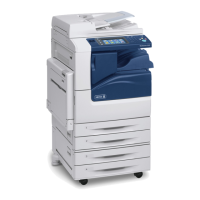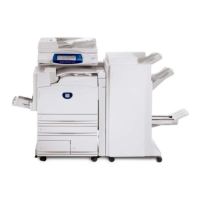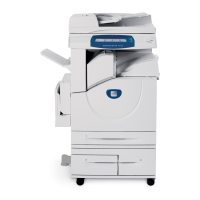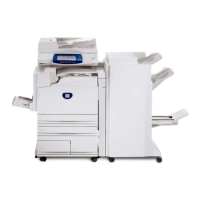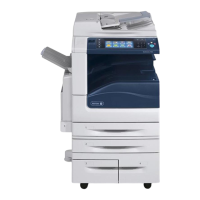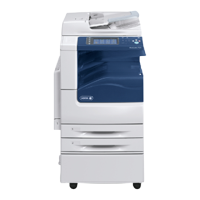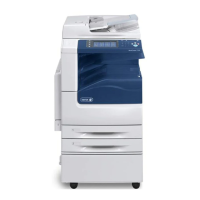WorkCentre 7220-7225 Information Assurance Disclosure Paper
Ver. 1.0, January 2013 Page 24 of 61
2.8.2.7.
Port 88 Kerberos
This port is only open when the device is communicating with the Kerberos server to authenticate a user, or to
request a TGT / TGS to access the LDAP server. To disable this port, authentication must be disabled, and this is
accomplished via the Local User Interface.
This version of software has Kerberos 5.1.8 with DES (Data Encryption Standard) and 64-bit encryption. The Kerberos
code is limited to user authentication, and is used to authenticate a user with a given Kerberos server as a valid user
on the network. Please note that the Kerberos server (a 3rd party device) needs to be set up for each user. Once the
user is authenticated, the Kerberos software has completed its task. This code will not and cannot be used to encrypt
or decrypt documents or other information.
This feature is based on the Kerberos program from the Massachusetts Institute of Technology (MIT). The Kerberos
network authentication protocol is publicly available on the Internet as freeware at
http://web.mit.edu/kerberos/www/.
Please note:
The device does not require much of the information provided by Kerberos for authenticating. For the most part,
the device only uses information that indicates whether authentication has passed. Other information that the
server may return (e.g. what services the user is authenticated for) is ignored or disabled in the Xerox
implementation. This is not an issue since the only service a user is being authenticated for is access to an e-mail
directory. No other network services are accessible from the Local UI.
Xerox has received an opinion from its legal counsel that the device software, including the implementation of a
Kerberos encryption protocol in its network authentication feature, is not subject to encryption restrictions based on
Export Administration Regulations of the United States Bureau of Export Administration (BXA). This means that it
can be exported from the United States to most destinations and purchasers without the need for previous approval
from or notification to BXA. At the time of the opinion, restricted destinations and entities included terrorist-
supporting states (Cuba, Iran, Libya, North Korea, Sudan and Syria), their nationals, and other sanctioned entities
such as persons listed on the Denied Parties List. Xerox provides this information for the convenience of its customers
and not as legal advice. Customers are encouraged to consult with legal counsel to assure their own compliance with
applicable export laws.
2.8.2.8.
Port 110, POP-3 Client
This unidirectional port is used when receiving an Internet Fax (I-Fax) or E-Mail. These jobs may only be printed, and
the port is only open if I-Fax is enabled and while receiving the job. It is not configurable.
2.8.2.9.
Ports 137, 138, 139, NETBIOS
For print jobs, these ports support the submission of files for printing as well as support Network Authentication
through SMB. Port 137 is the standard NetBIOS Name Service port, which is used primarily for WINS. Port 138
supports the CIFS browsing protocol. Port 139 is the standard NetBIOS Session port, which is used for printing. Ports
137, 138 and 139 may be configured in the Properties tab of the device’s web page.
For Network Scanning features, ports 138 and 139 are used for both outbound (i.e. exporting scanned images and
associated data) and inbound functionality (i.e. retrieving Scan Templates). In both instances, these ports are only
open when the files are being stored to the server or templates are being retrieved from the Template Pool. For these
features, SMB protocol is used.
2.8.2.10.
Port 161, SNMP
This port support the SNMPv1, SNMPv2c, and SNMPv3 protocols. Please note that SNMP v1 does not have any
password or community string control. SNMPv2 relies on a community string to keep unwanted people from
changing values or browsing parts of the MIB. This community string is transmitted on the network in clear text so
anyone sniffing the network can see the password. Xerox strongly recommends that the customer change the
community string upon product installation. SNMP is configurable, and may be explicitly enabled or disabled in the
Properties tab of the device’s web pages.
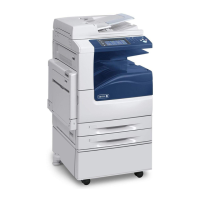
